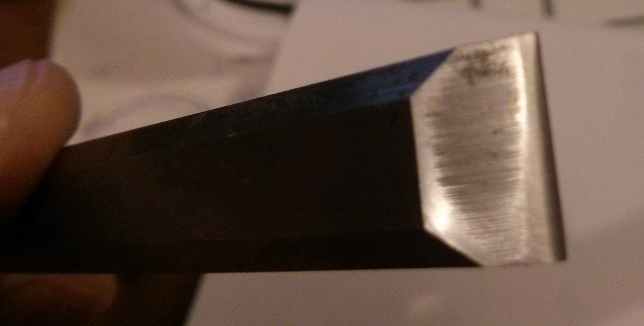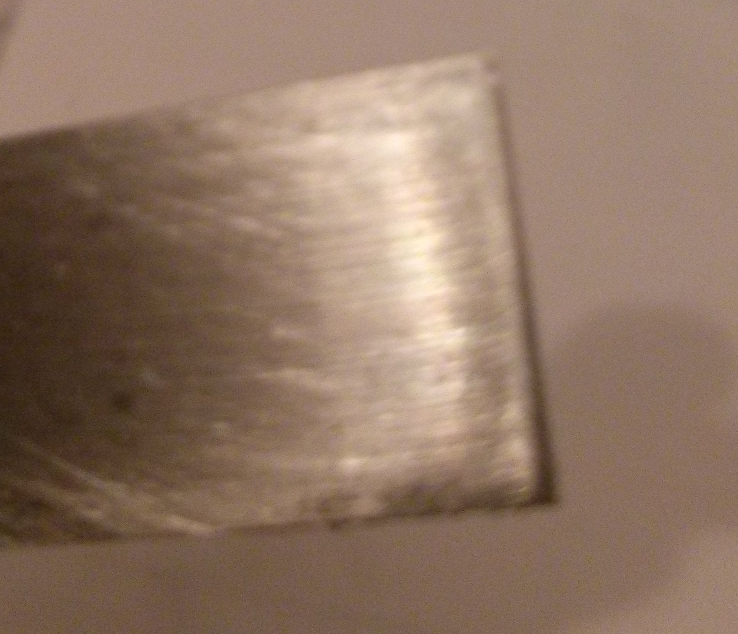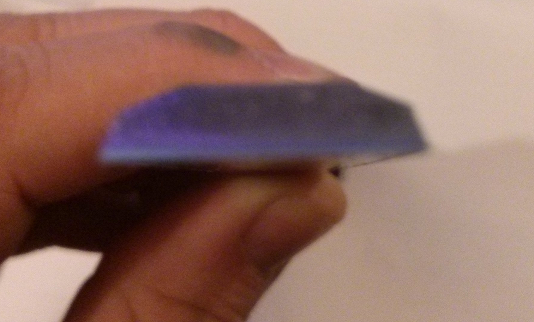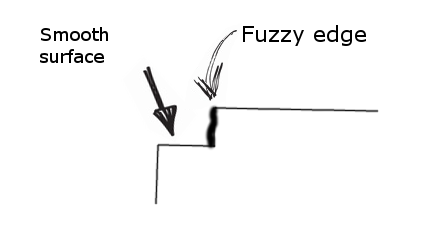ScaredyCat
Established Member
I've only just started out doing woodwork and I'm currently just trying to get some basics down pat. I managed to find an old crappy silverline chisel I had neglected and honed the blade. On my workpiece, which is Sapele, I'm getting some nice smooth sections except for the inner edges which seem 'fuzzy' - just like the picture :/
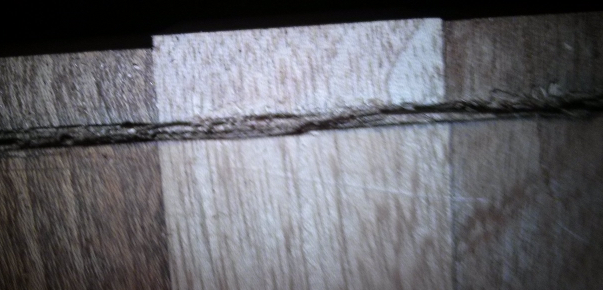
What can I do to get rid of it. The picture makes it look more obvious than it really is because I've zoomed in. As you can see the lower part is nice an smooth and I don't seem to be able to get the chisel point closer in to the line.
Any tips for a n00b?

What can I do to get rid of it. The picture makes it look more obvious than it really is because I've zoomed in. As you can see the lower part is nice an smooth and I don't seem to be able to get the chisel point closer in to the line.
Any tips for a n00b?




